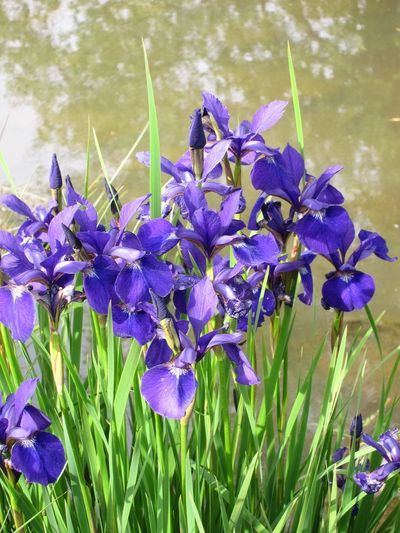What is a Water Iris?
Although several iris types grow in wet soil, true water iris is a semi-aquatic or bog plant that grows best in shallow water deep enough to cover the crown year round. However, most water iris plants will also grow in wet soil alongside a pond or stream, or even in a well-watered garden spot. True water irises include:
Rabbit-ear iris Copper or red flag iris Siberian iris Louisiana iris Yellow flag iris Blue flag iris
Water Iris Growing Conditions
Planting a water iris in a wide pond plant basket or plastic pot to confine the growth is advisable, as some types of water iris, like yellow flag irises, can spread like crazy and may become difficult to control. Look for a location where the plant is exposed to the sun for most of the day unless you live in a hot, desert climate. In that case, a little afternoon shade is beneficial. If you don’t have a pond, try planting water iris in a whiskey barrel lined with plastic. The water should cover the crown by no more than 4 inches (10 cm.). Although water iris can be planted nearly every time of year in warm climates, autumn is the optimum time in other regions, as it allows time for the plant to get settled in before the arrival of cold weather. If the weather is hot, provide afternoon shade until the roots are established.
Water Iris Plant Care
Fertilize water iris plants regularly throughout the growing season using a general-purpose aquatic fertilizer to encourage the healthy growth of roots, foliage, and blooms. Alternatively, use a balanced, slow-release aquatic fertilizer. Water iris generally remain green all year in warmer climates, but any yellow or brown leaves should be removed to keep the plant healthy and the water clean. Cut water iris to just above the water line in autumn if you live in a cooler climate. Repot water iris into a slightly larger container every year or two.
